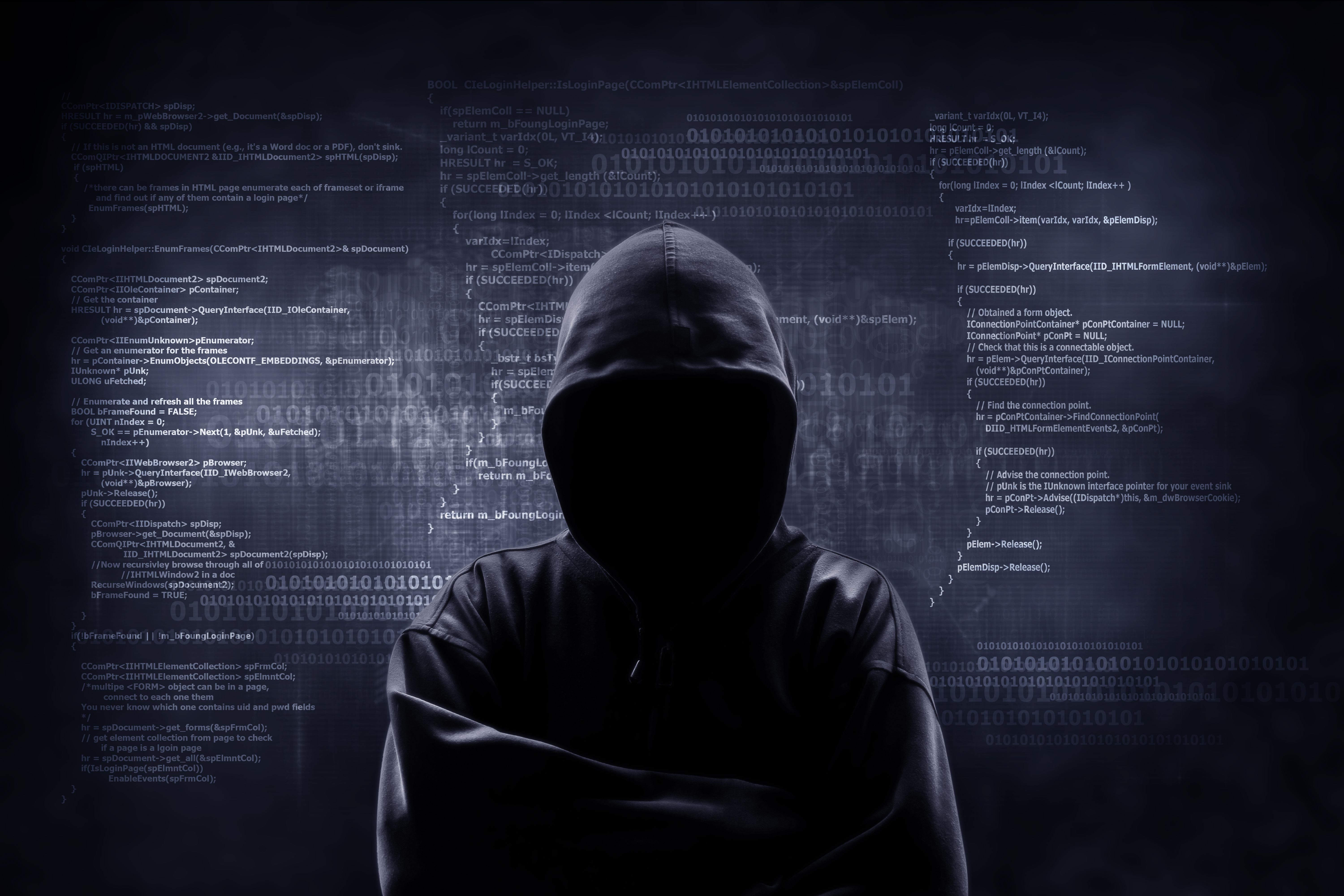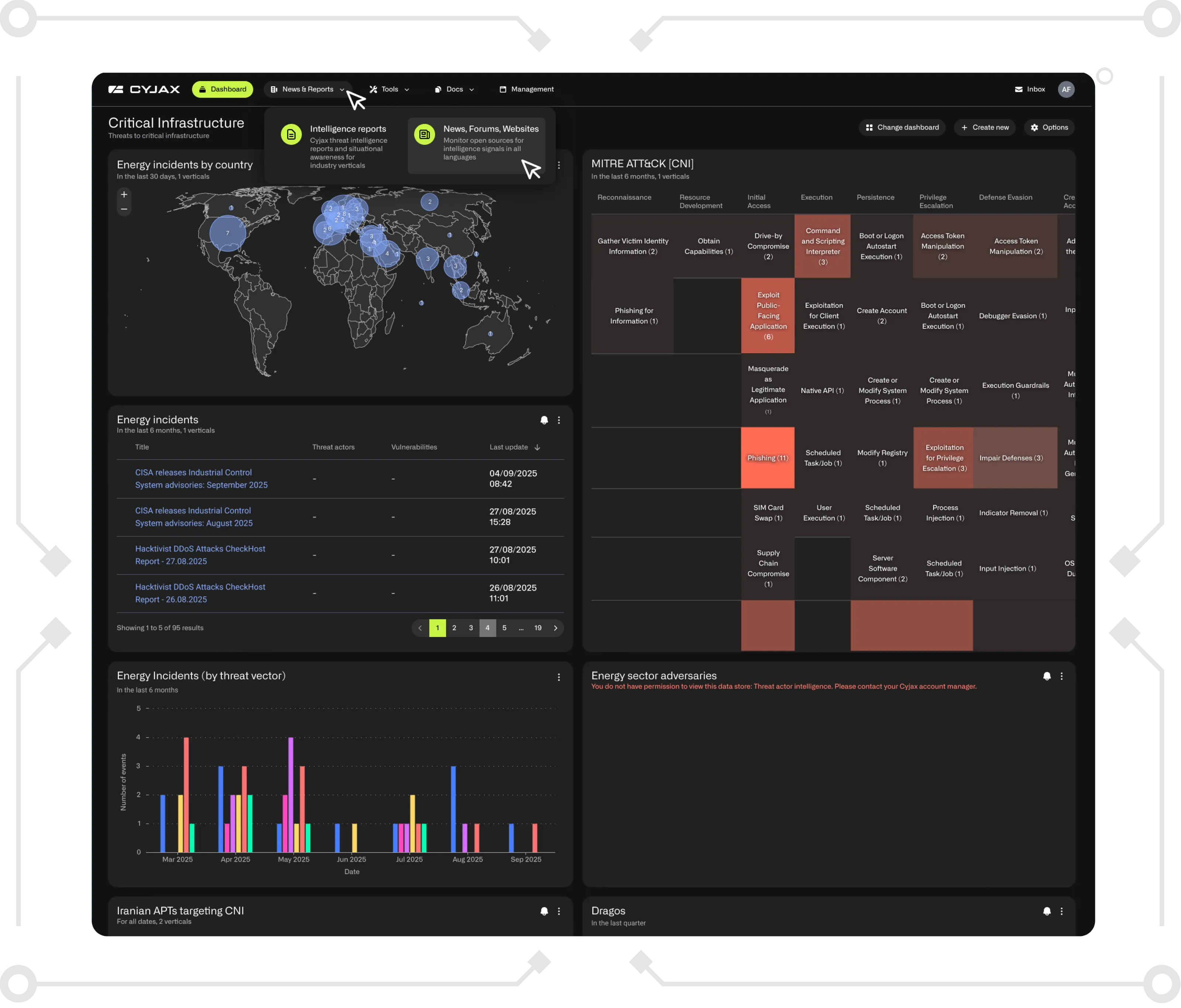Dark Web vs Deep Web: What’s the Difference and Why CISOs Should Care
Understanding the Deep Web and Dark Web is essential for CISOs navigating today’s threat landscape. This blog breaks down their differences, the risks they pose, and how intelligence-led monitoring helps organisations detect, prevent, and respond to cyber threats before they escalate.

Introduction
The internet is often perceived as a single, open network, a space where information flows freely and everything is just a search away. In reality, what we access through browsers and search engines represents only a small fraction of the web’s full architecture. This visible layer, known as the Open Web, contains public-facing websites, social platforms, and online content indexed by search engines. Beneath it lies a vast and largely unseen expanse where information is restricted, anonymised, or deliberately concealed. This is where the Deep Web and Dark Web exist, two distinct yet often conflated layers of the digital ecosystem.
For CISOs, understanding these distinctions is more than academic; it’s fundamental to identifying threats, safeguarding data, and anticipating emerging risks. This blog explores the key differences between the Deep Web and Dark Web, and why they matter for modern security leadership.
Understanding the Layers of the Web
a. The Open Web
The Open Web (or “surface web”) is the part of the internet most of us use day-to-day: publicly accessible websites, blogs, corporate portals, news sites and social media platforms, essentially content that is indexed by search engines and freely discoverable. According to recent estimates, this layer represents as little as ~4% of all internet content.
For a CISO, this means that what’s easily visible to you and your organisation is just the tip of the iceberg, valuable from a visibility perspective but limited in scope.
b. The Deep Web
Beneath the surface lies the Deep Web: any content that is not indexed by standard search engines. This includes private databases (medical records, legal documents), corporate intranets, pay-walled services, internal apps, cloud storage behind login-walls, and more. Because these resources are shielded from public crawling, they constitute an estimated 90-99% of the internet.
For organisations, the implication is clear: the attack surface isn’t limited to visible web pages. Many of the most sensitive assets live in this hidden zone where threat actors often lurk, targeting data that is behind credentials or obscure endpoints.
c. The Dark Web
The Dark Web is a purposely concealed subset of the Deep Web. It’s accessible only via specialised tools (e.g., the “The Onion Router "or Tor Browser) and often associated with anonymity, encrypted communications and illicit activity. While it is a far smaller portion of the internet compared to the overall Deep Web, it’s disproportionately significant for cyber risk.
For a CISO, this means that beyond just “what you can’t see” in the Deep Web, there exists “what you must actively monitor” in the Dark Web, where threat actors buy, sell or exploit stolen data, credentials, zero-day access and more.
Deep Web vs Dark Web: The Key Differences
When discussing cybersecurity from a leadership perspective, the distinction between the Deep Web and the Dark Web is more than academic, it’s where threat actors live, trade, plan and execute.
1. Accessibility & Visibility
- Deep Web content is generally hidden from search engines (subscription-services, intranets, cloud storage) but accessed with credentials or permissions.
- Dark Web requires special tools (e.g., the Tor Browser) and is intentionally anonymised for hosts and users.
2. Purpose & Content: Routine vs Illicit
- In the Deep Web you find legitimate, private business-systems: internal dashboards, patient records, secure file shares, not inherently malicious.
- In the Dark Web you find criminal marketplaces, stolen credential dumps, malware-as-a-service, ransomware infrastructures.
3. Risk & Impact Mechanisms
- The Deep Web may appear lower risk because it’s behind access controls, but it isn’t safe by default. A compromised internal system is still hidden from search engines but exposed to threat actors.
- The Dark Web’s risk is more visible: data that leaves your environment ends up on forums, for sale, or used for further attacks. Consider these illustrative stats:
- Corporate login credentials are listed on underground markets for as little as US $2.
- A study found fraud-guides were the top category of listings (49 %), followed by personal data (15.6 %) and non-financial credentials (12.2 %) on major dark-web markets.
- Access to “initial corporate infrastructure” for threat actors can cost between US $2 000-4 000 on the dark web.
4. Real-world Case Examples
- The U.S. Department of Justice (DOJ) announced the seizure of Genesis Market in April 2023, which had facilitated the sale of stolen credentials from over 80 million accounts.
- On underground markets, corporate email accounts are offered in bulk for low dollar amounts, enabling business-email-compromise (BEC) and phishing campaigns.
Why CISOs Should Care
The Dark Web is far more than a hidden corner of the internet; it’s a thriving ecosystem where stolen credentials, sensitive corporate data, and threat actor activity circulate, often long before organisations even realise a breach has occurred. This makes it a high-risk zone for businesses of all sizes, as threat actors can exploit exposed information to launch phishing attacks, ransomware campaigns, or business email compromise schemes.
Dark-web monitoring gives CISOs critical early-warning visibility into these threats. By tracking leaked credentials, compromised assets, and chatter among malicious actors, security leaders can detect potential breaches before they escalate, protecting both employees and customers. It also enables organisations to respond proactively to emerging threats rather than reacting after an incident has caused financial, operational, or reputational damage.
When combined with threat intelligence, dark-web monitoring transforms raw signals into actionable insights. This allows security teams to prioritise risks, align defensive measures with likely attack vectors, and safeguard sensitive information across all layers of the digital ecosystem. Beyond protecting data, it also protects the organisation’s brand and reputation, showing stakeholders, partners, and customers that cybersecurity risk is actively managed.
For modern CISOs, integrating dark-web monitoring and intelligence-led threat analysis is no longer optional. It is a strategic necessity, ensuring organisations stay ahead of cybercriminals, mitigate exposure, and maintain trust in an increasingly complex and hostile digital landscape.
Conclusion
The Deep Web and Dark Web may be hidden from plain sight, but their impact on organisational security is very real. For CISOs, understanding the distinctions between these layers and actively monitoring them is critical to identifying threats, protecting sensitive data, and safeguarding both your people and your brand. Threat intelligence and dark-web monitoring are no longer optional tools; they are essential components of a modern, proactive cybersecurity strategy.
At CYJAX, we specialise in uncovering hidden threats across the Deep and Dark Web, turning complex data into actionable intelligence so organisations can stay one step ahead of cybercriminals. Learn how our threat intelligence solutions can help you protect your assets, your people, and your reputation. Explore CYJAX solutions here.
Get Started with CYJAX CTI
Empower Your Team. Strengthen Your Defences.CYJAX gives you the intelligence advantage: clear, validated insights that let your team act fast without being buried in noise.




